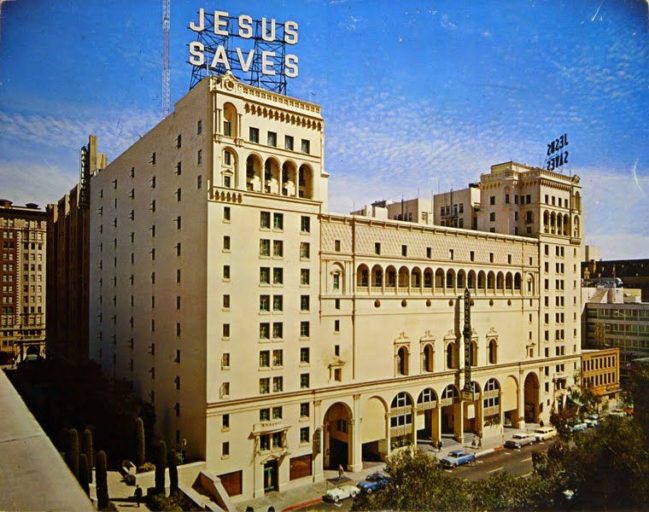
I grew up in a large commuter church. Church of the Open Door in downtown Los Angeles drew a few thousand Christians together every week from a twenty-five mile radius in all directions. It was an amazing church, renowned, not only for its Bible teaching and huge thirteen story building with two thirty-foot high “Jesus Saves” signs on top, but also for its large and effective church-based fellowship groups.
My parents, for example, were in the same Christian Endeavor group – which met at the church on Sunday evenings – their entire lives. Mom and Dad first met in that group as teenagers, and continued with those believers until they were elderly. Some of their “CE” friends were even in the same retirement home where my dad spent the last years of his life.
I had a similar experience at “COD,” as we lovingly called our church, until I moved to Texas to attend seminary at age twenty-one. The fellowship I enjoyed in my childhood church formed deep and lasting friendships that continue to this day. When I would read in my Bible about “loving one another,” I could immediately think of my friendships at church. We truly did love each other.
The problem I had, however, was that those friendships, and the fellowship they provided, were isolated from the rest of my life. No one in my neighborhood attended COD. And none of my fellow students at school attended the church. In fact, I remember only one incident where I spontaneously ran into someone during the week from church. It was as if I was living a schizophrenic life.
That experience created in me a lifelong thirst for genuine Christian community every day. Turns out, COD was an extreme example of a problem almost all churches have in our culture: how do you make the fellowship and love we Christians experience in a church setting visible to the rest of the world on a daily basis?
To be sure, our culture itself, with its mobility and emphasis on individualism, makes it increasingly difficult for the church to exhibit the reality of Christian community to the world. But the church also bears some responsibility as well: we have hidden our fellowship behind eight walls: the four walls of our church building and the four walls of our home fellowship groups.
The hidden nature of our fellowship at church is obvious. We meet every week in a building. But no one outside knows what goes on inside. Not so obvious, however, is the hidden nature of our home fellowship groups. Just because these groups are meeting in neighborhoods doesn’t necessarily mean our neighbors can observe our fellowship. Patti and I have Christian neighbors next door. They are members of a home fellowship group in their church that sometimes meets in their home. But Patti and I know next to nothing about it.
What to do? Here are two general suggestions on how churches can be more visible with their fellowship.
- Get your church members outside your church building as often as you can. A church in my neighborhood holds its weekday service in our local park during the summer. Great idea! One reason I love men’s team ministry is because it get’s men outside in neighborhoods. The neighbors of our widowed and single parents get to observe them expressing the love of Christ every month for years.
- Develop your own relationships with your neighbors. We’re to love our neighbors as ourselves, are we not? So let’s do it. Let your neighbors see how Jesus Christ has impacted your life by genuinely loving them.
Our world needs to see Christians loving each other. Lets not hide that love under a bushel.
This post first appeared in NewCommandment.org.
This Week’s Promoted Post
_______________________________________________________________

Learn how to form teams of men for every widow, single mom
and fatherless child in your church at NewCommandment.org.
_______________________________________________________________